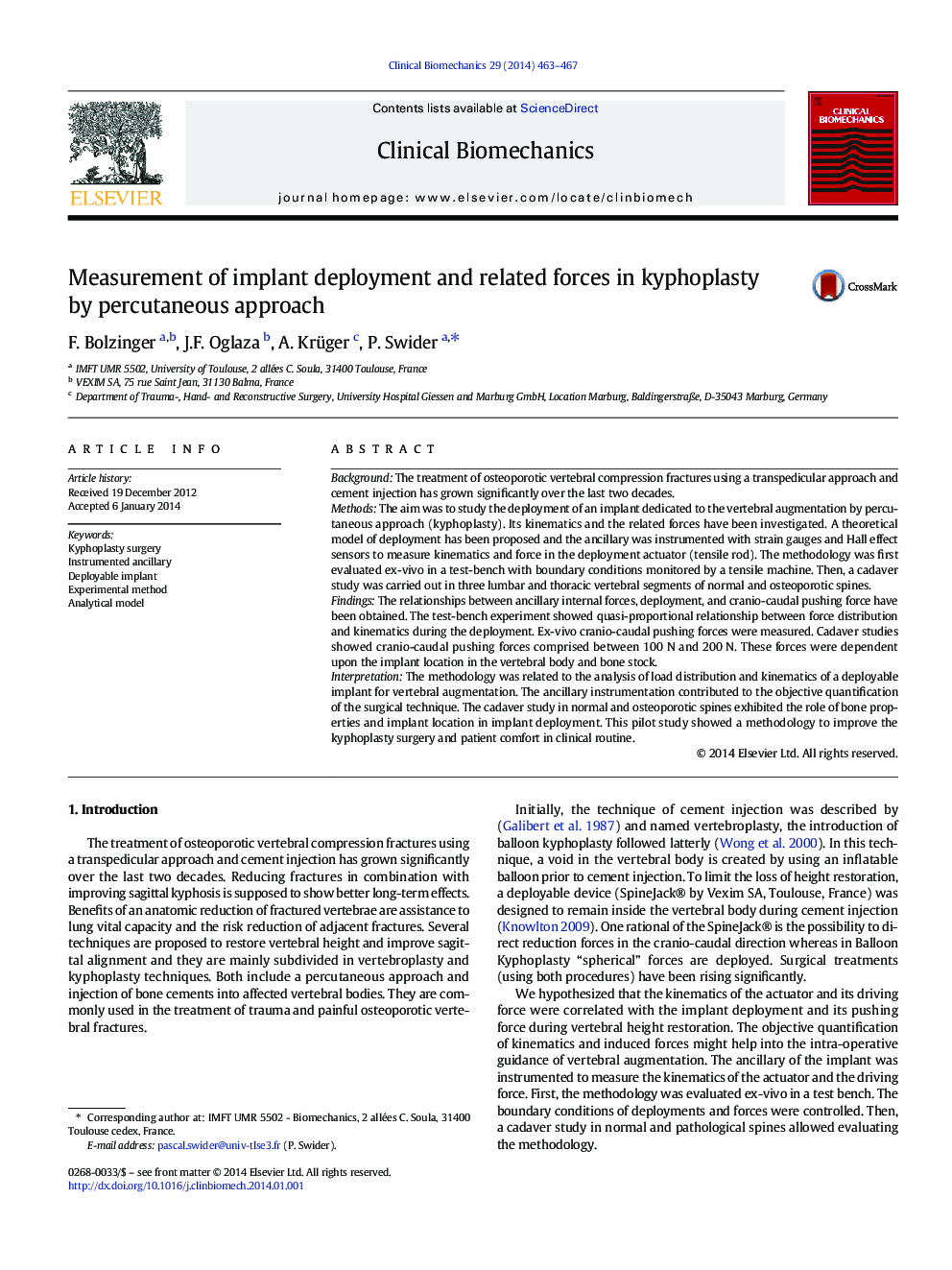| Article ID | Journal | Published Year | Pages | File Type |
|---|---|---|---|---|
| 6204868 | Clinical Biomechanics | 2014 | 5 Pages |
BackgroundThe treatment of osteoporotic vertebral compression fractures using a transpedicular approach and cement injection has grown significantly over the last two decades.MethodsThe aim was to study the deployment of an implant dedicated to the vertebral augmentation by percutaneous approach (kyphoplasty). Its kinematics and the related forces have been investigated. A theoretical model of deployment has been proposed and the ancillary was instrumented with strain gauges and Hall effect sensors to measure kinematics and force in the deployment actuator (tensile rod). The methodology was first evaluated ex-vivo in a test-bench with boundary conditions monitored by a tensile machine. Then, a cadaver study was carried out in three lumbar and thoracic vertebral segments of normal and osteoporotic spines.FindingsThe relationships between ancillary internal forces, deployment, and cranio-caudal pushing force have been obtained. The test-bench experiment showed quasi-proportional relationship between force distribution and kinematics during the deployment. Ex-vivo cranio-caudal pushing forces were measured. Cadaver studies showed cranio-caudal pushing forces comprised between 100Â N and 200Â N. These forces were dependent upon the implant location in the vertebral body and bone stock.InterpretationThe methodology was related to the analysis of load distribution and kinematics of a deployable implant for vertebral augmentation. The ancillary instrumentation contributed to the objective quantification of the surgical technique. The cadaver study in normal and osteoporotic spines exhibited the role of bone properties and implant location in implant deployment. This pilot study showed a methodology to improve the kyphoplasty surgery and patient comfort in clinical routine.
